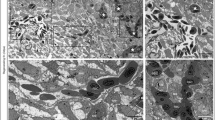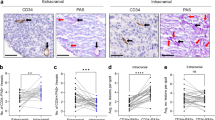Abstract.
Lymphatic vasculature has recently emerged as a prominent area in biomedical research because of its essential role in the maintenance of normal fluid homeostasis and the involvement in pathogenesis of several human diseases, such as solid tumor metastasis, inflammation and lymphedema. Identification of lymphatic endothelial specific markers and regulators, such as VEGFR-3, VEGF-C/D, PROX1, podoplanin, LYVE-1, ephrinB2 and FOXC2, and the development of mouse models have laid a foundation for our understanding of the major steps controlling growth and remodeling of lymphatic vessels. In this review we summarize recent advances in the field and discuss how this knowledge as well as use of model organisms, such as zebrafish and Xenopus, should allow further in depth analysis of the lymphatic vascular system.
Similar content being viewed by others
Author information
Authors and Affiliations
Corresponding author
Additional information
Received 26 January 2007; received after revision 5 March 2007; accepted 29 March 2007
Rights and permissions
About this article
Cite this article
Mäkinen, T., Norrmén, C. & Petrova, T.V. Molecular mechanisms of lymphatic vascular development. Cell. Mol. Life Sci. 64, 1915–1929 (2007). https://doi.org/10.1007/s00018-007-7040-z
Published:
Issue Date:
DOI: https://doi.org/10.1007/s00018-007-7040-z




